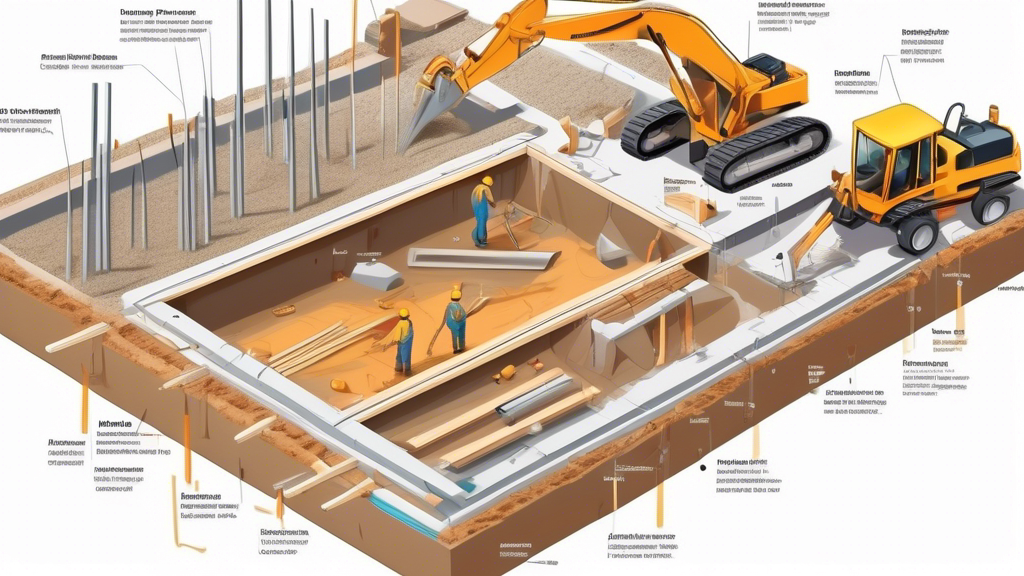Introduction to the World of Foundations
Imagine building your dream house. You’ve picked the perfect location, crafted an exquisite design, and envisioned every detail with the utmost care. But before the paint, the fixtures, and the furniture, there’s one crucial aspect that needs attention – the foundation. Just like a house, almost everything in life that’s built to last starts with a strong foundation. Whether it’s education, relationships, or buildings, the principle is universal. Today, we’re diving into the architectural and construction realm to explore the basics of foundation, ensuring your structures – whether literal or metaphorical – stand tall against the test of time (and gravity).
What is a Foundation?
At its core, a foundation is the lower portion of a building structure that transfers its gravity loads to the earth. If you’re thinking of foundations as the feet of buildings, you’re not wrong. They keep everything above them stable and secure, no matter what life (or the weather) throws their way. While foundations might not be the first thing that comes to mind when you admire a building, they’re undeniably the unsung heroes of architecture.
Types of Foundations
There’s no one-size-fits-all solution in the world of foundations. The choice depends on various factors, including the type of soil, the building load, and environmental conditions. Let’s dig into the main types of foundations you’ll encounter in the architecture and construction worlds:
- Shallow Foundations: These are used where the load-bearing capacities of the surface soils are sufficient to support the structure. They’re typically less expensive and easier to construct than their deeper counterparts.
- Deep Foundations: When surface soils aren’t up to the job, deep foundations come into play, reaching down to more stable layers of earth. They’re often used for large structures and in areas with difficult soil conditions.
Within these two categories, myriad specific foundation types exist, including slab-on-grade, footing, pile, and drilled shafts, each with its own strengths and application scenarios.
Key Considerations in Foundation Design
Designing a foundation isn’t as simple as digging a hole and pouring some concrete. It’s a meticulous process that balances structural requirements with environmental considerations. Here are a few key aspects that engineers and architects must juggle:
- Soil Analysis: The type, composition, and properties of the soil dictate which foundation type is best suited for a project. Soil tests are a must to avoid any sinking feelings about the building’s stability.
- Load Analysis: Understanding the total load of the building, including its weight, the occupants, and even furniture, is crucial to design a foundation that can shoulder the burden without breaking a sweat.
- Environmental Factors: From water tables to frost lines, the environment plays a critical role in foundation design. Ignoring these factors can lead to a foundation that’s as reliable as a weather forecast (which, let’s be honest, isn’t always very reliable).
The Importance of a Solid Foundation
A well-designed foundation does more than just keep a building upright. It ensures durability, preventing structural issues like cracks, leaning, and even collapse. Think of it as the ultimate insurance policy for your construction project – one that pays out in peace of mind and structural integrity.
Choosing the Right Foundation for Your Project
Choosing the appropriate foundation requires a careful evaluation of your project’s specific needs and conditions. Consulting with experienced engineers and architects is akin to asking a map for directions – it guides you to the right path, ensuring your building’s longevity and safety. Remember, the right foundation is the first step toward turning your architectural dreams into reality.
Conclusion: Laying the Groundwork for Success
Understanding the basics of foundation is essential for anyone involved in the construction and architecture world. It forms the bedrock of safe, durable, and reliable structures. By paying careful attention to soil analysis, load calculations, and environmental factors, you can ensure that your project stands on solid ground. And just like in construction, every successful endeavor in life starts with building a strong foundation, whether it’s personal growth, relationships, or learning a new skill.
So, whether you’re laying the foundation for the next skyscraper or simply expanding your knowledge horizon, remember the importance of a solid base. And if you find yourself on the brink of a groundbreaking project, seeking stellar web development services is much like ensuring a solid foundation for your digital presence. Visit www.starmetaversegeorgia.com for your all web development needs, ensuring your online structure is as robust and reliable as the best architectural marvels.
Remember, even the tallest buildings started with a single blueprint and a solid foundation. With the right foundation, who knows how high you’ll go?

Comments are closed